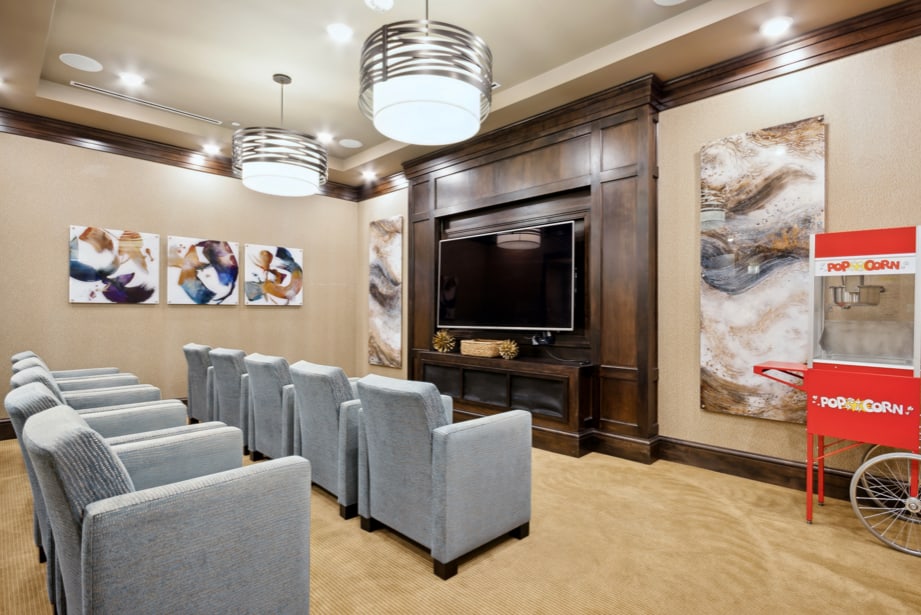Key Takeaways
- The emotional journey requires patience and understanding from both partners
- Couples can thrive in the same community while receiving different levels of care
- Maintaining connection through visits, shared activities, and involvement in daily decisions strengthens relationships
- Celebrating milestones and shared hobbies supports emotional well-being.
- Senior living can bring new opportunities for joy, balance, and partnership.
What to Do When One Spouse Needs Senior Living
When one spouse needs senior living care while the other remains at home, couples face a significant life transition. It’s natural to think about what to expect from the future here. This time is full of opportunities, but it also means you need to make a plan. That’s the key to enjoying your time together in your new life.
For many couples, this experience becomes less about separation and more about adaptation. With thoughtful planning and the right resources, it’s possible to maintain a strong emotional bond, even when living arrangements differ. In many cases, couples discover new ways to care for one another, share experiences, and continue building a fulfilling life together.
What Happens When Only One Partner Needs Care
When thinking about assisted living for a spouse, a range of emotions naturally surfaces. You might feel anxious about separation, guilty about the decision, or uncertain about how this change will affect your daily life together. These feelings are all entirely normal.
Each person experiences this transition differently. The partner moving into senior living may worry about being a burden, while the one remaining at home might feel the weight of responsibility or loneliness. Remember that an adjustment period is normal and expected, and make sure you’re staying open and honest with one another about your feelings.
Keeping Your Connection Strong During This Transition
Building new routines together is one of the most meaningful ways to stay close during this change. The little things matter, so try to spend time together every day. Even something as simple as sharing a morning coffee can go a long way.
Staying engaged in each other’s daily lives also helps maintain a sense of partnership. Join care planning discussions, attend community events, or talk regularly about the activities you both enjoy. These shared moments help keep your relationship familiar, even as surroundings shift.
Navigating Different Levels of Care in the Same Community
Many communities offer multiple levels of care. This is more valuable than some people think. This means that older couples can live in the same location while receiving different types of support. When one partner needs assisted living services while the other would prefer living independently, living together is still possible.
As health needs evolve, remaining within the same community often allows for a smooth transition between care levels. This flexibility helps preserve friendships, staff relationships, and a sense of belonging. Planning ahead for possible changes, like if memory care becomes a necessity, allows couples to stay proactive and focused on living well together.
Supporting Each Other Through the Transition
For couples adjusting to new living arrangements, emotional support and steady communication make a meaningful difference. It can be stressful when only one person moves to senior living, but there is good news. It’s often possible for couples to live together in assisted living, even if only one spouse requires care. This means you can continue living together when only one of you needs some support.
Remember that you’re in this situation together. Supporting one another is just as important as ever, so regularly check in with your spouse. Lean on the community’s team and resources—they’re there to help you both as you adjust to this new chapter together.

Practical Ways to Stay Involved in Each Other’s Lives
Living together in assisted living—while one partner receives more support—offers new opportunities to stay connected in daily life. With a little creativity, couples can continue building experiences and sharing moments of joy.
Take Part in Care Conversations
Staying involved in day-to-day decisions helps both partners feel heard and supported. So, spend time having discussions about care preferences, daily routines, and wellness goals. This gives the community an understanding of your needs as a couple, not just as individuals.
Share Activities in Adapted Ways
Hobbies may shift over time, but shared interests don’t have to disappear. So, try spending time working on your shared hobbies. Even something as simple as reading side-by-side or trying a group class together is a chance to bond. These moments help keep your routines familiar and meaningful, and that can do wonders for a relationship.
Celebrate Milestones Together
Birthdays, anniversaries, and holidays are still important touchpoints in your relationship. Many senior living communities welcome community events and offer ways to gather for special occasions. Whether you host a small celebration or simply enjoy a quiet meal together, these milestones reinforce your shared history and ongoing partnership.
Stay Engaged in the Community
Being part of a shared community gives you both a chance to create new connections. You can try joining local programs and activities or participating in scheduled outings. These shared experiences add structure, variety, and a sense of belonging to daily life.
Building Your New Normal Together
Finding joy in your current situation might take time, but many couples find unexpected happiness in senior living. It’s a chance to reduce responsibilities, discover new joys in daily life, and give your spouse the support they deserve. This can be incredible for quality of life—for both of you.
At The Grande at Chesterfield, we support couples with care that respects your relationship and everyday rhythms. Whether you’re exploring assisted living, memory care, or short-term options, we’re here to help you find the right fit. Schedule a visit to see how we help couples feel at home—together.










